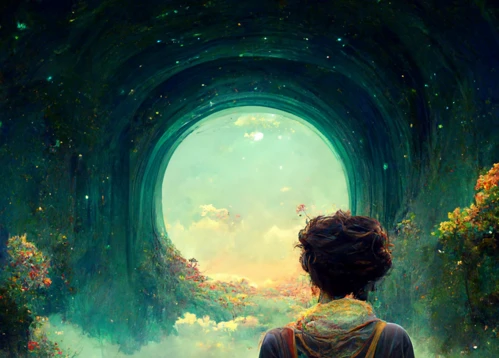Have you ever experienced the fascinating world of lucid dreams? These mysterious phenomena have captivated human beings throughout history, offering a doorway to a realm where the boundaries of reality and imagination blur. In this article, we embark on a journey to explore the symbolism in lucid dreams and unlock the hidden meanings within. As we delve into the depths of our subconscious mind, we will discover that every symbol holds a profound significance, reflecting our deepest desires, fears, and emotions. Join us as we unravel the enigmatic language of dreams, decipher the messages they hold, and gain insight into our own inner selves. Let’s embark on this intriguing adventure together and uncover the secrets of the dream world.
The Concept of Lucid Dreams

Lucid dreams, also known as dreams in which one becomes aware that they are dreaming, are a phenomenon that has fascinated and perplexed humanity for centuries. In these extraordinary states of consciousness, individuals are able to navigate and interact with their dreamscape with a level of self-awareness that is typically absent in regular dreams. Lucid dreams offer a unique opportunity to explore and experiment within the realm of our own subconscious, where the boundaries of reality dissolve and the possibilities become limitless. With the ability to control and manipulate their experiences, lucid dreamers can unlock hidden potentials, confront fears, and even engage in extraordinary adventures. The concept of lucid dreaming has been explored by various cultures and prominent figures throughout history, such as Tibetan Buddhists and the Greek philosopher Aristotle. Scientific research has sought to unravel the mysteries behind these intriguing experiences, shedding light on the potential benefits and significance of lucid dreaming in our waking lives.
Definition of Lucid Dreams
A lucid dream is characterized by a state of heightened consciousness and self-awareness within the dream environment. It is a phenomenon in which the dreamer becomes aware that they are in a dream while still actively dreaming. This awareness can vary in degree, ranging from a simple recognition of the dream state to full control and manipulation of the dream events. Lucid dreams often occur during the rapid eye movement (REM) stage of sleep, which is associated with vivid and immersive dreams. While the exact mechanisms and triggers of lucid dreaming are not fully understood, it is believed to involve the activation of the prefrontal cortex, the area responsible for self-awareness and decision-making. This allows individuals to experience a hybrid state where they can observe and potentially influence the dream narrative. Lucid dreaming can be a transformative experience, providing an opportunity for self-exploration, creativity, and personal growth. It offers a realm where one can engage with their subconscious mind, confront fears, practice skills, and even explore impossible scenarios. Lucidity in dreams has been reported for centuries, with historical accounts from cultures such as Tibetan Buddhists and ancient Egyptians. In recent times, the experiences of famous lucid dreamers have contributed to a deeper understanding of the potential benefits and significance of lucid dreams in our waking lives.
Understanding the Reality within Dreams
Understanding the reality within dreams is a fundamental aspect of exploring the symbolism hidden within them. Dreams have the ability to create vivid and convincing scenarios that mirror aspects of our waking reality. However, these scenarios often carry a deeper symbolic meaning that goes beyond the surface-level events. To truly grasp the reality within dreams, one must delve into the layers of symbolism present.
1. Surreal Elements: Dreams often contain surreal and fantastical elements that defy the laws of physics and logic. These elements serve as potent symbols that represent our subconscious mind’s attempt to communicate with us. For example, flying in a dream may indicate a sense of liberation or the desire to break free from limitations.
2. Emotional Context: Paying attention to the emotions experienced within dreams can provide key insights into their underlying messages. Strong emotions, such as fear or joy, can indicate areas of our waking life that require attention or celebration. By acknowledging and analyzing these emotions, we gain a deeper understanding of the emotional landscape within our dreams.
3. Recurrence and Patterns: Notice recurring symbols, themes, or patterns that appear across multiple dreams. These recurring elements often hold significant meaning and can be considered as potential guideposts within the dream world. Tracking these patterns over time can help uncover deeper truths and unveil aspects of our subconscious mind that require exploration.
4. Intuitive Interpretation: Understanding the reality within dreams requires tapping into our intuition and inner wisdom. While dream dictionaries and general interpretations can provide a starting point, it is important to trust our own instincts when deciphering the symbolism of our dreams. Personalized interpretations that resonate with our unique experiences and emotions often hold greater significance.
By exploring the reality within dreams, we gain access to a realm of hidden symbolism and profound insights. Each dream holds a secret language that reflects our innermost thoughts, desires, and fears. With patience, introspection, and an open mind, we can unlock the rich tapestry of symbolism within our dreams and embark on a transformative journey of self-discovery.
Symbolism in Lucid Dreams
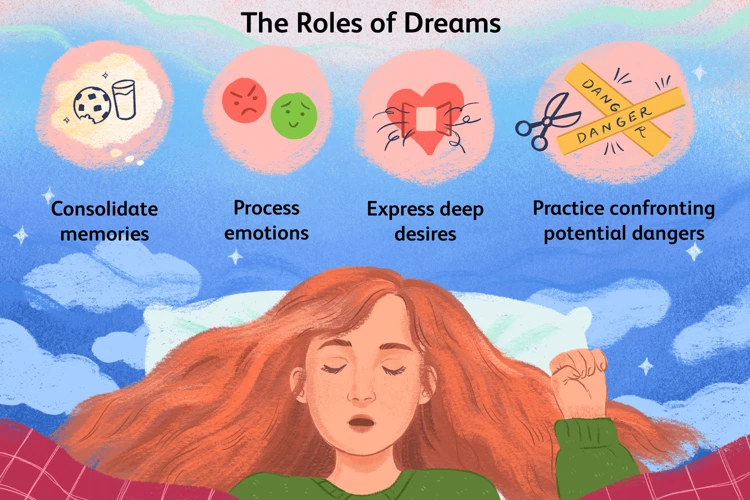
Embedded within the realm of lucid dreams lie profound layers of symbolism, waiting to be deciphered and explored. When we enter the world of lucid dreaming, we unlock a gateway to the hidden recesses of our psyche, where the unconscious mind expresses itself through rich and intricate symbolic interactions. These symbols act as a bridge between the conscious and unconscious, offering a deeper understanding of our desires, fears, and emotions. Each symbol carries personalized meaning, unique to the dreamer’s own experiences and psyche. From the animals that appear as guides or adversaries, to the objects that hold significance, and even the natural landscapes that unfold before us, every element in a lucid dream carries symbolic weight that can lead to profound insights and self-discovery. The symbolism in lucid dreams serves as a powerful tool for psychological exploration and personal growth, allowing us to tap into the vast reservoir of our subconscious and gain a greater understanding of ourselves and our innermost desires and conflicts.
Profound Symbolic Interactions
A crucial aspect of exploring the symbolism in lucid dreams is understanding the profound symbolic interactions that occur within the dream world. In these dreams, symbols can take on a heightened significance, representing deep emotions, hidden desires, or unresolved conflicts. Each symbol carries a unique message, often veiled in metaphor or allegory. The dreamer’s interaction with these symbols can be transformative, providing valuable insights into their inner world. These symbolic interactions can manifest in various ways, such as encountering mysterious creatures, conversing with deceased loved ones, or even engaging in surreal scenarios. The dreamer’s response to these interactions is critical in unraveling the symbolism. By paying close attention to their emotions and reactions during the dream, the dreamer can gain a deeper understanding of the underlying meanings embedded within the symbols. This process of exploring profound symbolic interactions not only enhances self-awareness but also facilitates personal growth and self-discovery, guiding individuals towards a greater understanding of themselves and their subconscious mind.
The Unconscious Mind’s Expression
The unconscious mind’s expression in lucid dreams is a fascinating aspect of these extraordinary experiences. When we enter a lucid dream state, we gain direct access to the depths of our subconscious, allowing us to witness the raw and unfiltered expressions of our deepest desires, fears, and emotions. In this realm, symbols and imagery that may be buried in our conscious awareness manifest themselves vividly, providing a rich tapestry of subconscious symbolism. The unconscious mind communicates through these symbols, often employing metaphors and allegories to convey its messages. These symbols can be deeply personal and unique to each individual, reflecting their own life experiences, memories, and aspirations. By unraveling the symbolism in lucid dreams, we gain invaluable insights into our own inner selves and the intricate workings of our minds. Exploring and deciphering these symbols can lead to profound self-discovery, personal growth, and transformation. It is through the expression of the unconscious mind in lucid dreams that we can begin to understand the deeper layers of our existence and unlock the hidden meanings that lie within.
Personalized Symbolism
In the realm of lucid dreams, the symbolism that unfolds is deeply personal and unique to each individual. This personalized symbolism in lucid dreams is shaped by our own experiences, memories, beliefs, and emotions. In this intricate web of symbolism, objects, animals, and landscapes take on highly subjective meanings. For one person, a butterfly may symbolize freedom and transformation, while for another, it may represent fragility and vulnerability. Likewise, a dream character could embody a specific person from one’s past or embody certain qualities and traits that hold personal significance. To decipher the personalized symbolism in lucid dreams, it is crucial to reflect upon one’s own associations, feelings, and memories attached to specific symbols. Keeping a dream journal to record these symbols and their individual significance can be immensely helpful in unraveling the hidden meanings within our dreams. By exploring and understanding our personalized symbolism, we gain insights into our own subconscious mind, fostering personal growth and self-awareness.
Analyzing Common Symbols

In the realm of lucid dreams, symbols serve as the language through which our subconscious communicates with us. By analyzing the common symbols that frequently appear in our dreams, we can gain a deeper understanding of their significance and the messages they convey. Animals, for example, often symbolize certain qualities or characteristics. A fierce lion may represent courage and strength, while a gentle dove can signify peace and harmony. Objects, on the other hand, hold their own unique symbolism. A locked door may represent a barrier or an opportunity for growth, while a mirror may reflect self-reflection and introspection. Additionally, nature itself is rich with symbolic interpretations. A stormy sea could indicate turmoil or emotions that need to be addressed, while a serene meadow may represent tranquility and inner peace. By recognizing and interpreting these symbols, we can unravel the hidden meanings within our dreams and gain valuable insights into our own subconscious minds.
Animals and their Representations
Animals have long been recognized as powerful symbols in the realm of dreams, each carrying its own distinct meanings and representations. In the context of lucid dreams, animals can serve as guides, messengers, or even embodiments of different aspects of our own psyche. The interpretations of animal symbolism in dreams are deeply subjective, as they are influenced by personal experiences, cultural backgrounds, and individual beliefs. The presence of a lion, for example, may signify courage, power, and leadership, while a rabbit might symbolize fertility, agility, and timidness. Similarly, a wolf can represent intuition, loyalty, and the wild aspects of our nature. It is essential to consider not only the specific animal but also its actions, characteristics, and the emotions it triggers within the dreamer. By paying attention to the interactions and emotions connected to animal symbolism in lucid dreams, one can gain valuable insights into their own hidden desires, fears, or latent qualities that are waiting to be acknowledged and expressed. By exploring the rich tapestry of animal representations in dreams, we can further deepen our understanding of ourselves and the intricate workings of our subconscious mind.
Objects and their Significance
Objects within a lucid dream hold immense significance, representing deeper meanings and messages from the subconscious mind. Each object encountered in a dream carries a symbolical weight, offering valuable insights into our emotions, desires, and fears. When exploring the topic of ”, it is crucial to approach them with an open and curious mind. Whether it’s a key, a mirror, or a book, every object has the potential to reveal hidden aspects of our psyche. For example, a key may symbolize unlocking new opportunities or accessing hidden knowledge, while a mirror could represent self-reflection or introspection. It is important to note that the interpretation of objects in dreams is highly personal and can vary from individual to individual. Paying attention to the context, emotions, and personal experiences associated with the object can provide further insight into its symbolic significance. Exploring the symbolism of objects in our lucid dreams can lead to a deeper understanding of ourselves and provide guidance on our waking journey. As we decipher the meaning behind these objects, we unveil a rich tapestry woven by our own subconscious minds.
Nature and its Symbolic Interpretation
Nature, with its vast array of elements and phenomena, holds a rich tapestry of symbolism within lucid dreams. Each aspect of nature can carry profound meanings that reflect aspects of our emotions, desires, and the human experience. Let us explore some of the symbolic interpretations associated with nature in the realm of lucid dreams:
1. Trees: Representing strength, growth, and rootedness, trees in lucid dreams can embody our own personal development and connection to the earth. The state of the tree, whether it is flourishing or withering, may mirror our own sense of vitality and well-being.
2. Water: Flowing water, such as rivers or waterfalls, often symbolizes the ever-changing nature of emotions and the subconscious mind. Calm, clear waters may indicate harmony and tranquility, while turbulent or murky waters might signal inner turmoil or unresolved emotions.
3. Animals: Just as animals hold symbolic meanings in various cultures and mythologies, encountering animals in lucid dreams can reveal hidden aspects of ourselves. For example, a wise owl may represent intuition and wisdom, while a powerful lion could symbolize personal strength and courage.
4. Mountains: Representing the challenges and obstacles we encounter in life, mountains in lucid dreams can signify our ability to overcome difficulties and achieve personal growth. Scaling a mountain may symbolize the pursuit of goals, while being at the peak might indicate a sense of accomplishment and fulfillment.
5. Flowers: Symbolizing beauty, growth, and renewal, flowers can represent the blossoming of our own potential. The type and color of flowers within a dream can also hold specific meanings. For example, red roses often signify passion and love, while white lilies may represent purity and spiritual growth.
It is important to note that interpretations of nature symbolism in lucid dreams can vary based on personal experiences, cultural background, and individual associations. It is vital to explore and reflect on one’s own emotions and experiences while engaging with the natural elements encountered in the dream realm. By paying attention to the intricate details of nature within lucid dreams, we can uncover hidden messages and gain deeper insight into our own inner selves.
Exploring Archetypal Symbols
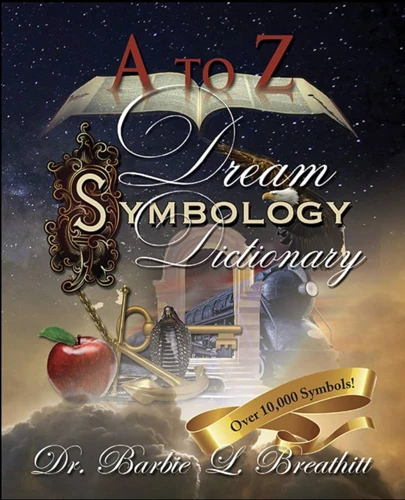
In the realm of lucid dreams, we encounter a fascinating world of archetypal symbols that hold profound meaning and significance. These symbols, deeply rooted in the collective unconscious, serve as universal representations of fundamental human experiences and emotions. The exploration of archetypal symbols within lucid dreams unveils a rich tapestry of imagery and narratives, reflecting the timeless essence of the human psyche. Carl Jung’s groundbreaking work on archetypes provides a valuable framework for interpreting these symbols and understanding their deeper implications. From the wise old man to the shadow, from the anima/animus to the trickster, each archetype carries its own unique energy and symbolism that reverberates within our dreams. By delving into the archetypal realm of our lucid dreams, we embark on a transformative journey of self-discovery, unraveling the profound wisdom that lies hidden within our own subconscious minds.
The Collective Unconscious in Lucid Dreams
In the realm of lucid dreams, the concept of the collective unconscious takes on a profound significance. Coined by renowned psychologist Carl Jung, the collective unconscious refers to the shared reservoir of archetypes, symbols, and experiences that transcend individual consciousness and are present in the collective psyche of humankind. When exploring lucid dreams, one can tap into this vast and mysterious realm, encountering archetypal figures and themes that hold universal meaning. The collective unconscious in lucid dreams allows individuals to connect with deep-rooted symbols and mythologies that are ingrained in our human experience. These symbols can manifest as ancient gods, mythical creatures, or even symbolic landscapes. By delving into this collective realm, we can gain insight into the broader human experience and the timeless patterns that shape our existence. It is through the exploration of the collective unconscious that lucid dreamers can access a wellspring of wisdom, creativity, and knowledge that goes beyond their individual selves. By engaging with these archetypes in our lucid dreams, we can unlock hidden aspects of our own consciousness and experience profound personal growth and transformation.
Carl Jung’s Archetypes and Their Meanings
In the realm of lucid dreaming, exploring the archetypal symbols holds great significance, and no discussion on this topic would be complete without delving into the groundbreaking work of renowned psychologist Carl Jung. Jung proposed the existence of archetypes – universal patterns or symbols that reside within the collective unconscious of all individuals. These archetypes represent fundamental aspects of the human experience and can manifest in dreams as powerful symbols with profound meanings. Some of the most notable archetypes include the Hero, the Trickster, the Wise Old Man, and the Shadow. Each archetype carries its own unique symbolism and can provide valuable insights into our dreams. For example, encountering the Hero archetype in a dream may indicate a call to action, personal growth, or a journey of self-discovery. Similarly, the appearance of the Trickster archetype could suggest the need for spontaneity, playfulness, or embracing unconventional solutions in waking life. By understanding the meanings behind these archetypes, lucid dreamers can gain a deeper understanding of themselves, their relationships, and their place in the world. Exploring Carl Jung’s theories and studying his work can assist in interpreting and analyzing the symbolism found within lucid dreams, opening up a rich and rewarding realm of self-exploration.
Dreaming with Colors

When delving into the realm of dreams, one cannot ignore the powerful presence of colors. In the world of lucid dreaming, colors hold immense significance and often act as symbols that convey deep emotions and meanings. Each color carries its own unique energy and mood, capable of evoking various emotional associations. For example, the color red may signify passion, power, or even anger, while blue can represent calmness, tranquility, or melancholy. The interpretation of color symbolism in lucid dreams varies from person to person, as individuals may have personal or cultural connections that shape their perception of colors. It is important to remember that the interpretation of color symbolism is subjective, and the meanings attributed to different colors can evolve and shift based on individual experiences and beliefs. So, keep a keen eye on the vibrant hues that paint your dreamscapes, as they may hold profound messages waiting to be unraveled.
Colors and Emotional Associations
Colors in lucid dreams hold tremendous symbolic significance and evoke powerful emotional associations. Each color carries its own unique energy and can elicit a range of emotions and reactions within the dreamer. Understanding the emotional associations of colors can provide valuable insights into the hidden meanings of our dreams.
1. Red: The color red is often associated with passion, vitality, and intensity. In lucid dreams, red may signify strong emotions, such as anger, desire, or excitement. It can also symbolize energy, power, or danger, depending on the dream context.
2. Blue: Blue is commonly linked to calmness, tranquility, and peace. In lucid dreams, the presence of blue may indicate a sense of serenity, relaxation, or even a need for emotional healing and introspection. It can also represent communication and clarity of thought.
3. Green: Green is closely tied to nature, growth, and renewal. In lucid dreams, green can symbolize harmony, balance, and abundance. It may also be associated with feelings of jealousy, envy, or in some cases, healing and rejuvenation.
4. Yellow: Yellow is often associated with joy, positivity, and creativity. In lucid dreams, yellow can represent optimism, enlightenment, or intellectual pursuits. It may also indicate a need for confidence or a desire for attention and recognition.
5. Purple: Purple is often associated with spirituality, mystery, and the subconscious mind. In lucid dreams, purple can symbolize intuition, psychic abilities, and deep spiritual connections. It may also represent royalty or a sense of luxury and extravagance.
6. Black: Black is often linked to darkness, mystery, and the unknown. In lucid dreams, black may suggest hidden fears, the need for introspection, or the exploration of the subconscious mind. It can also represent endings and new beginnings.
7. White: White is often associated with purity, innocence, and clarity. In lucid dreams, white can symbolize purity of thought, spiritual awakening, or a sense of transcendence. It may also represent new opportunities or a blank canvas for personal growth.
It’s important to note that individual interpretations may vary, as personal experiences and cultural backgrounds can influence the emotional associations we attach to colors. When analyzing the symbolism of colors in your lucid dreams, pay attention to how they make you feel and the context in which they appear. This can offer valuable insights into your emotions, desires, and subconscious thoughts.
Interpreting Color Symbolism in Lucid Dreams
When it comes to interpreting color symbolism in lucid dreams, each hue carries its own unique significance and emotional associations. Colors within dreams can serve as powerful indicators of the dreamer’s emotions, subconscious desires, and hidden meanings. For example, the color red often represents passion, energy, and strong emotions such as anger or love. It can signify vitality and excitement, or it may be a warning sign of danger or aggression. On the other hand, the color blue is frequently associated with tranquility, calmness, and peace. It can represent a sense of serenity or indicate a need for emotional healing and relaxation. Yellow, with its vibrant and radiant nature, is often connected to joy, optimism, and intellectual stimulation. It can symbolize optimism, creativity, and a zest for life. Green is commonly linked to growth, harmony, and balance. It may represent fertility, renewal, or a connection with nature. Purple, with its mystical and regal allure, often symbolizes spirituality, intuition, and transformation. It can reflect a search for deeper meaning or a connection with the divine. By paying attention to the colors experienced in lucid dreams, dreamers can gain insight into their emotional states and subconscious desires, ultimately unlocking the hidden messages within their dream experiences. So, the next time you find yourself immersed in a vivid dream world, take a moment to observe the colors around you and delve into the rich symbolism they may hold.
The Power of Numbers
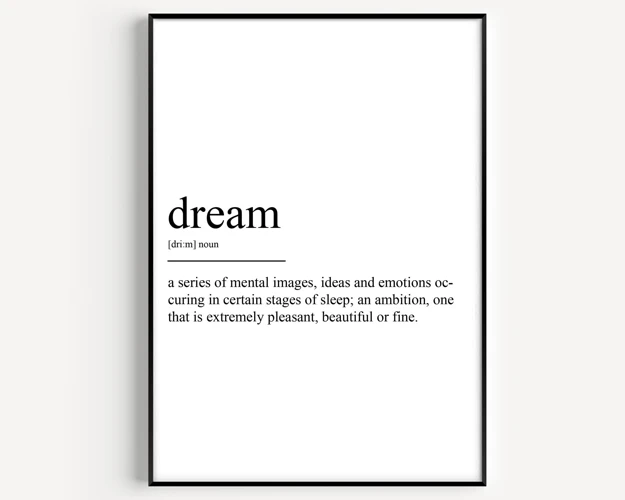
Numbers hold a remarkable power in the realm of lucid dreaming. In dreams, numbers often carry symbolic meanings and can offer valuable insights into our subconscious mind. Each number possesses its own unique significance, and understanding this symbolism can deepen our understanding of the dreamscape. For example, the number “three” is often associated with creativity, balance, and unity, while “seven” frequently represents spiritual growth and self-discovery. By paying close attention to the numbers that appear in our dreams, we can gain a deeper understanding of ourselves and the messages our subconscious is attempting to convey. Whether it’s through the use of an html table or a html list, organizing and categorizing the different meanings assigned to numbers can help us uncover the hidden messages within our dreams and harness the power they hold.
Numerological Symbolism in Dreams
Numerological symbolism in dreams is a fascinating aspect of dream analysis that explores the meanings and significance of numbers within our dream experiences. Numbers have long been considered powerful symbols that carry their own unique energies and vibrations. In the realm of dreaming, numbers can hold profound messages and offer insights into various aspects of our lives. Each number carries its own symbolism, and their appearances in dreams can provide clues about our personal growth, challenges, and opportunities. For example, the number 1 signifies new beginnings, individuality, and self-confidence. Seeing this number in a dream may indicate a fresh start or a need to assert oneself. The number 2 represents duality, balance, and harmony. Encountering this number in a dream may suggest the need for cooperation or embracing both sides of a situation. The number 3 symbolizes creativity, communication, and self-expression. If this number appears in a dream, it may be an invitation to explore and embrace one’s creative talents. Numerological symbolism in dreams extends beyond individual numbers and can involve the combination and sequence of numbers as well. Paying attention to the numbers that emerge in our dreams and their corresponding meanings can provide valuable insights into our subconscious desires, emotions, and experiences. By delving into the rich symbolism of numbers in our dreams, we can gain a deeper understanding of ourselves and the journey we are on.
Meaning Behind Specific Numbers in Lucid Dreams
In the realm of lucid dreams, numbers hold a fascinating significance, each representing a unique symbol or message from our subconscious. When we encounter specific numbers within the dream world, they can serve as powerful tools for interpretation and understanding. Every number carries its own meaning behind it, and by delving into numerological symbolism, we can gain deeper insights into our dreams. For example, the number “1” often symbolizes unity, new beginnings, and individuality. It signifies a sense of independence and self-confidence, urging us to embrace our own strength and take the lead in our waking lives. On the other hand, the number “7” is often associated with spiritual and mystical qualities. It represents introspection, wisdom, and a connection to higher realms of consciousness. Encountering this number in a lucid dream may indicate a need for introspection and a quest for deeper understanding. Similarly, the number “13” is often associated with superstition and is considered unlucky by some. However, in the context of a lucid dream, it can represent transformation and rebirth, signifying an opportunity for personal growth and evolution. As we explore the meaning behind specific numbers in lucid dreams, it is important to consider our own personal associations and cultural references. Our individual experiences and beliefs can influence the interpretation of numbers in our dreams, making it a deeply personalized and introspective endeavor.
Interpreting Dreamscapes
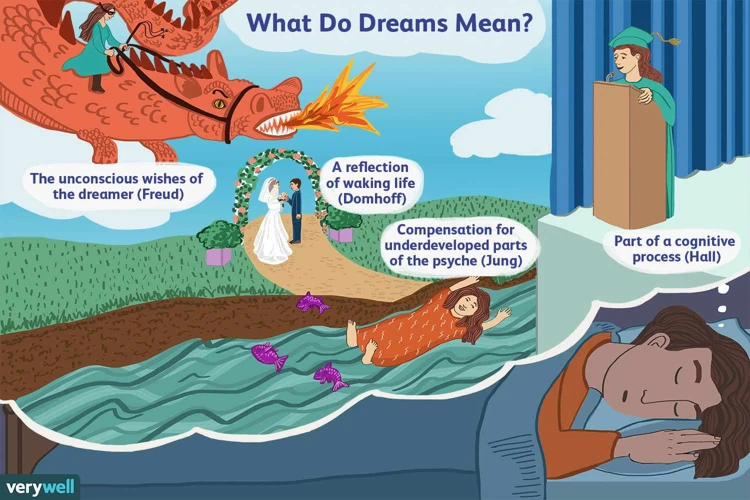
Dreamscapes, the vivid and immersive landscapes that unfold within our dreams, hold a multitude of symbolic meanings and hidden messages. These dream environments range from bustling cities to serene natural landscapes, each offering a unique backdrop for our dream experiences. Interpreting dreamscapes allows us to delve into the depths of our subconscious mind and understand the underlying symbolism behind these environments. When we find ourselves exploring a city in our dreams, it can represent the complexities of our waking life, the interactions with other people, and the hustle and bustle of daily routines. On the other hand, natural landscapes symbolize a connection with nature, tranquility, and inner peace. By unraveling the significance of dream environments, we gain valuable insights into our own emotions, desires, and experiences. Whether we find ourselves wandering through city streets or standing atop majestic mountains, these dreamscapes hold the key to unlocking the mysteries of our subconscious mind.
Cities and Urban Landscapes
Cities and urban landscapes in lucid dreams often hold rich symbolism that can provide profound insights into our waking lives. The bustling streets, towering buildings, and vibrant cityscapes represent the complexities and dynamics of our social interactions and the external world we navigate daily. How we perceive and interact with these urban landscapes can reveal hidden anxieties, ambitions, and desires. For example, finding oneself lost in a labyrinthine city may represent a feeling of confusion or being overwhelmed in our waking life. Alternatively, a city engulfed in darkness may symbolize fear, danger, or a sense of foreboding. On the other hand, a flourishing and vibrant cityscape may signify growth, progress, and opportunities. Exploring the details of the city, such as specific locations, landmarks, or interactions with city dwellers, can offer deeper insights into our relationships, aspirations, and personal journeys. Each dreamer’s experience of cities and urban landscapes will be unique, as they are shaped by personal memories, experiences, and perceptions. By analyzing and contemplating the symbolism embedded in these dreamscapes, we can unlock hidden meanings and gain valuable self-awareness, allowing us to navigate the complexities of life with a deeper understanding of ourselves.
Natural Landscapes and Their Symbolism
Natural landscapes in lucid dreams hold a profound symbolism that often mirrors the emotions and experiences of the dreamer. The lush forests, towering mountains, serene lakes, and expansive meadows become a canvas for the unconscious mind to express its deepest meanings. Natural landscapes can represent a sense of tranquility and harmony, symbolizing the dreamer’s inner peace and connection with nature. The presence of water, whether it be a calm lake or a rushing river, may convey emotions such as serenity, renewal, or the flow of life. In contrast, barren deserts or stormy seas can symbolize inner turmoil, challenges, or feelings of being lost. The changing seasons within these landscapes can also carry significant meanings. The bloom of flowers in spring may represent growth, new beginnings, or creativity, while the falling leaves of autumn may signify change, transition, or the passage of time. Mountains can portray obstacles, goals, or a desire for personal growth, with their peaks symbolizing achievement and triumph. The interpretation of natural landscapes in lucid dreams is deeply personal and can vary based on the individual’s experiences, beliefs, and emotions. By paying attention to the intricacies of these dreamscapes, one can gain valuable insights into their own inner world and subconscious desires.
Questioning Dream Characters

Within the realm of lucid dreams, one encounters a vast array of characters who inhabit the dream world. These dream characters can range from familiar faces to complete strangers, each carrying their own unique energy and significance. Questioning dream characters becomes a captivating aspect of lucid dreaming, as it allows us to delve deeper into the symbolic meanings hidden within them. By engaging in dialogue with these dream figures, we can unlock valuable insights and gain profound understanding of our own subconscious mind. Dream characters may embody symbols that represent aspects of ourselves, providing a mirror through which we can explore our own identities, desires, and fears. They might serve as guides, mentors, or even adversaries, offering lessons and challenges for personal growth. As we question and interact with dream characters, we open ourselves to a new level of self-exploration and self-discovery, unraveling the enigmatic tapestry of our dreamscape.
The Role of Dream Figures
Dream figures, also known as characters or people encountered in dreams, play a significant role in the realm of symbolism within lucid dreams. These dream figures can take on various forms, ranging from familiar faces to complete strangers or even abstract entities. While their appearances may vary, their presence often holds deeper meanings and messages for the dreamer. Dream figures can serve as mirrors of the dreamer’s own psyche, representing different aspects of their personality, desires, fears, or unresolved conflicts. They can act as guides, offering insight or guidance through their words or actions. Alternatively, dream figures may also serve as catalysts for personal growth and self-discovery, challenging the dreamer to confront their innermost thoughts and emotions. As active participants within the dream world, dream figures provide a platform for interaction and exploration, creating opportunities for the dreamer to gain valuable insights about themselves and their waking lives. It is important for lucid dreamers to pay close attention to the roles, actions, and dialogues of dream figures, as they can be powerful catalysts for personal growth and self-reflection. Keeping a dream journal to record encounters with dream figures and analyzing their significance can provide a deeper understanding of one’s subconscious mind and facilitate personal growth.
Symbols Embodied in Dream Characters
Dream characters in lucid dreams can often serve as powerful symbols, carrying deeper meanings and messages within their very existence. Each character encountered in a dream may represent a different aspect of ourselves, our relationships, or even our subconscious desires. These embodied symbols can take on various forms, such as loved ones, fictional characters, or even strangers. The symbolism of dream characters can be deciphered by examining their behavior, appearance, and the emotional reactions they evoke. For example, a dream character who appears hostile may symbolize unresolved conflicts or repressed anger within the dreamer’s psyche. On the other hand, encountering a wise and nurturing dream character might represent the dreamer’s own inner wisdom or the need for guidance in waking life. It is important to pay attention to the interactions and dialogue with dream characters, as they often provide valuable insights and reflections of our own thoughts, emotions, and experiences. By studying and interpreting the symbols embodied in dream characters, individuals can gain a deeper understanding of their own psyche and unravel hidden facets of their subconscious mind.
Dreaming and the Passage of Time
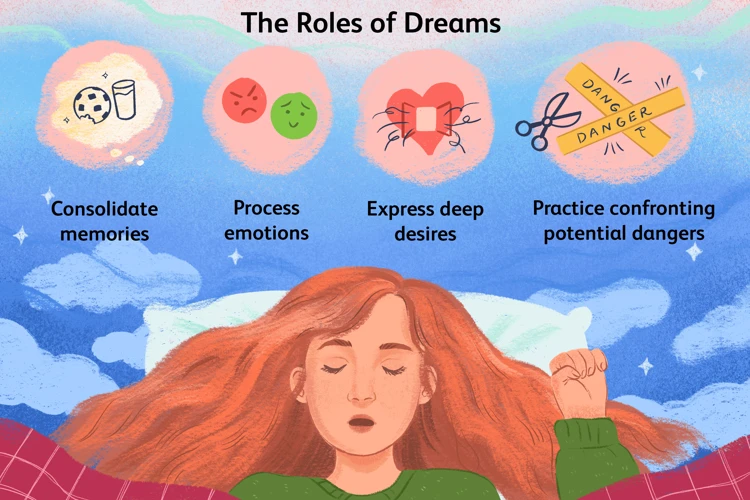
Within the realm of dreams, time takes on a mysterious and fluid nature, creating a space where the past, present, and future intertwine in intriguing ways. In the realm of lucid dreams, the passage of time becomes a symbol laden with deeper meaning. Time in dreams has the power to distort, compress, or elongate, reflecting the dreamer’s perception and emotions. It can be a metaphor for moments of transition, marking significant events or personal growth. Sometimes time in dreams serves as a reminder of the fleeting nature of life, urging us to appreciate the present moment. Other times, it may represent a feeling of being trapped or running out of time. Understanding the symbolic meaning of time in dreams provides a doorway to unravel the messages and hidden wisdom the dream world holds. It invites us to explore our relationship with time, our fears, and desires, ultimately allowing us to gain insight into our own lives and the choices we make.
Symbolic Meaning of Time in Dreams
The symbolic meaning of time in dreams holds a profound significance, reflecting our perception and relationship with the passage of time. In the dream realm, time often behaves in peculiar ways, defying the conventions of the waking world. It can stretch and warp, creating a sense of eternity or urgency. Each aspect of time, whether it be a specific moment, a period, or the absence of time altogether, carries its own symbolic implications.
When time seems to move quickly in a dream, it may represent a feeling of being overwhelmed or a sense of urgency in waking life. This could indicate the need to manage time more efficiently or to prioritize certain tasks. Conversely, when time slows down or comes to a halt in a dream, it might signify a desire to savor a particular moment or a feeling of stagnation in one’s waking life. It could also indicate a wish to escape the pressures of time and enjoy a moment of respite.
Another interesting aspect of time in dreams is the occurrence of time loops. These loops symbolize unresolved issues or recurring patterns in our lives that we need to address. They can serve as reminders to break free from repetitive cycles and initiate change.
The concept of past, present, and future can also manifest in dreams. It is not uncommon to encounter scenarios where future events are showcased, providing a glimpse into what lies ahead. These glimpses can carry valuable insights and guidance for our waking lives.
Ultimately, the symbolic meaning of time in dreams is deeply personal and can vary for each individual. It is essential to pay attention to our emotional responses and associations with time in dreams, as they hold the key to unraveling their unique symbolism. By exploring and reflecting upon the symbolic messages conveyed through time in our dreams, we can gain a deeper understanding of our relationship with time in our waking lives and use this insight to make positive changes and embrace the present moment.
Time Manipulation in Lucid Dreams
In the realm of lucid dreams, time becomes a malleable and subjective concept. When exploring the phenomenon of time manipulation in lucid dreams, dreamers often find themselves experiencing time in ways that defy the laws of the physical world. One common experience is the sensation of time passing at an accelerated or decelerated rate. In some instances, dreamers may perceive hours or even days passing within a few moments of real-time. This distortion of time allows for extended periods of exploration and adventure within the dream world. Conversely, dreamers may also witness time slowing down to a crawl, creating a heightened sense of awareness and perception. This altered perception of time offers an opportunity for introspection and deep contemplation. The ability to manipulate time in lucid dreams provides a unique platform for personal growth and self-discovery. By consciously altering the flow of time, dreamers can engage in activities that would be limited by the constraints of the waking world. They can relive past memories, visit historical eras, or even travel into the future. This phenomenon highlights the power of the human mind and its capacity to transcend the boundaries of reality. The experience of time manipulation in lucid dreams serves as a reminder that our perception of time is not fixed but rather a construct of our consciousness. It opens up endless possibilities for exploration and creativity within the vast expanse of the dream realm.
Unlocking Symbolic Messages
As we delve into the realm of dreams, one of the most intriguing aspects is their ability to convey symbolic messages that hold deeper meanings. To unlock these messages, it is essential to keep a dream journal and analyze the symbols that emerge from our unconscious mind. By documenting our dreams and reflecting on the symbolism present, we can begin to unravel the enigmatic language of the subconscious. Dreamwork techniques, such as active imagination and symbolism interpretation, can assist in deciphering the hidden messages contained within our dreams. These techniques involve immersing ourselves in dreamscapes, engaging with dream characters, and questioning the role they play. Through these practices, we can gain profound insights into our inner selves, confront unresolved issues, and even receive guidance for our waking lives. The unlocking of symbolic messages is a powerful tool that allows us to tap into the wisdom of our dreams and harness their transformative potential.
Keeping a Dream Journal to Analyze Symbols
Keeping a dream journal is an invaluable practice for those seeking to unlock the hidden meanings and symbolism within their lucid dreams. By recording our dreams immediately upon waking, we capture the vivid details and emotions experienced during the dream state. This process allows us to delve deeper into the intricate symbolism present within our dreams. When analyzing dream symbols, it is important to pay attention to recurring motifs or images that appear across different dreams as they may hold significant meaning. The dream journal becomes a treasure trove of personal symbols, serving as a reference point for deciphering the messages of our subconscious mind. It is essential to describe the symbols with as much detail as possible, including colors, textures, and emotions associated with them. Additionally, noting the context and any personal experiences or events that may have influenced the dream can provide further insight into their symbolic significance. The act of recording dreams in a journal not only aids in remembering and analyzing symbols but also strengthens the connection between the dreamer and their dream world. By actively engaging in this practice, we develop a heightened awareness of our dreams, fosters the ability to recognize patterns, and ultimately facilitates personal growth and self-discovery.
Dreamwork Techniques for Symbol Interpretation
– Journaling: Keeping a dream journal is an invaluable tool for deciphering and interpreting the symbols in your dreams. Upon waking, take a few moments to jot down any fragments or vivid images that you recall. As you record your dreams over time, patterns may emerge, allowing you to identify recurring symbols and themes.
– Free Association: Take a symbol from your dream and free associate with it. Write down any thoughts, emotions, or memories that the symbol evokes. This technique helps to establish a deeper connection between the symbol and your personal experiences, offering insights into its meaning and significance.
– Active Imagination: Engage in a form of active imagination where you mentally interact with a dream symbol. Visualize the symbol and enter into a dialogue with it, asking questions and allowing your intuition to guide the conversation. This technique can lead to unexpected revelations and a deeper understanding of the symbol’s message.
– Symbolic Research: Conduct research on the symbolic meanings attributed to specific symbols. Explore various cultural, mythological, and psychological perspectives on the symbol to gain a broader understanding of its significance. However, remember that personal associations and interpretations also play a crucial role in symbol analysis.
– Artistic Expression: Use artistic mediums such as drawing, painting, or sculpting to express the symbolism found in your dreams. Translating the imagery into visual or tangible form can provide further insights and a deeper connection with the symbol’s meaning.
– Group Dreamwork: Participate in group dreamwork sessions where individuals share their dreams and collaboratively interpret one another’s symbols. The diverse perspectives and collective wisdom of the group can shed light on different layers and dimensions of the symbols, enriching the interpretation process.
Conclusion
In conclusion, exploring the symbolism in lucid dreams offers a fascinating journey into the depths of our subconscious minds. These dreams provide a rich tapestry of symbols and meanings that can be deciphered and analyzed to gain insight into our inner selves. By paying attention to the profound symbolic interactions, we can uncover the unconscious mind’s expression and tap into personalized symbolism that reflects our own unique experiences and emotions.
Analyzing common symbols, such as animals and their representations, objects and their significance, and nature and its symbolic interpretation, allows us to unravel the hidden messages within our dreams. We can also delve into the archetypal symbols present in lucid dreams, drawing upon the collective unconscious and Carl Jung’s archetypes to gain a deeper understanding of the meanings behind these symbols.
Colors play a significant role in our dreams, as they carry emotional associations and can be interpreted as symbolic representations. By examining the colors present in our lucid dreams, we can uncover deeper insights into our emotions and the messages our dreams are conveying.
Numerological symbolism in dreams adds another layer of interpretation, as specific numbers hold different meanings and can provide valuable insights into our dream experiences. Understanding the symbolism of numbers can help unravel the hidden messages within our dreams.
Dreamscapes, whether they be cities and urban landscapes or natural landscapes, also hold symbolic significance. By exploring the symbolism present in these dream settings, we can gain further insight into our own experiences and emotions.
Dream characters, be they real individuals or symbolic representations, play a vital role in our dreams. By questioning the role of dream figures and examining the symbols they embody, we can uncover deeper meanings within our dreams.
The passage of time within dreams also carries symbolic meaning, reflecting our perceptions and understanding of time in waking life. By exploring the symbolism of time in dreams and the ability to manipulate time within lucid dreams, we can gain a deeper understanding of our relationship with time.
Unlocking the symbolic messages within our dreams can be aided by keeping a dream journal and utilizing dreamwork techniques for symbol interpretation. By recording and analyzing our dreams, we can identify recurring symbols and patterns, providing valuable insights into our subconscious thoughts and emotions.
In conclusion, exploring the symbolism in lucid dreams opens a doorway to self-discovery and personal growth. By uncovering the hidden meanings within our dreams, we can gain a deeper understanding of ourselves and our place in the world. So, embrace the enigmatic language of dreams and embark on the adventure of deciphering the symbolism within your own lucid dreams. Happy exploring!
Frequently Asked Questions
What is the purpose of lucid dreaming?
The purpose of lucid dreaming is subjective and varies from person to person. Some individuals use lucid dreams as a means of creative exploration and self-expression, while others seek personal growth, emotional healing, or spiritual experiences.
Can anyone learn to have lucid dreams?
Yes, anyone can learn to have lucid dreams with practice and patience. Various techniques, such as reality checks, keeping a dream journal, and practicing mindfulness, can help increase the likelihood of experiencing lucidity during dreams.
Are lucid dreams real?
While lucid dreams occur within the realm of sleep and imagination, they are equally real experiences as any other form of conscious awareness. Lucid dreaming provides a unique opportunity to explore and interact with the dream world in a conscious state.
Are there any dangers associated with lucid dreaming?
Lucid dreaming itself is not inherently dangerous. However, it is important to practice good sleep hygiene and ensure that lucid dreaming does not disrupt your overall sleep patterns or quality of rest.
Can lucid dreams help with problem-solving?
Yes, lucid dreams can offer a platform for problem-solving and creative brainstorming. Many individuals have reported gaining insights, inspiration, and innovative ideas from their lucid dreams.
Do all dreams have symbolic meanings?
While not all dreams have explicit symbolic meanings, symbolism is a common and powerful aspect of dreams. Symbols in dreams can represent personal beliefs, emotions, and experiences, providing a rich tapestry for interpretation and self-reflection.
What is the difference between lucid dreams and regular dreams?
The main difference between lucid dreams and regular dreams is the level of self-awareness and control experienced during the dream. In lucid dreams, individuals are aware that they are dreaming and can actively participate in their dream experiences.
Can lucid dreams be used for psychological exploration?
Yes, lucid dreams can be a powerful tool for psychological exploration. They can help uncover hidden aspects of the self, provide insight into unresolved issues, and facilitate personal growth and self-discovery.
Is there a connection between lucid dreams and spirituality?
Many individuals view lucid dreams as a gateway to spiritual exploration and transcendence. Lucid dreaming can offer opportunities to engage with the subconscious and explore the depths of one’s spiritual beliefs and connections.
Can lucid dreaming improve sleep quality?
While lucid dreaming itself does not directly improve sleep quality, developing the skills and techniques associated with lucid dreaming, such as mindfulness and relaxation, can positively impact overall sleep patterns and promote restful sleep.

